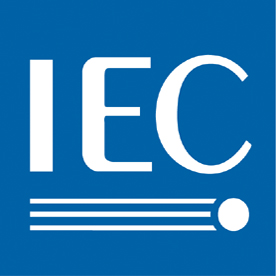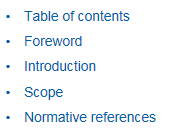ISO/IEC TR 10182:2016
Information technology - Programming languages, their environments and system software interfaces - Guidelines for language bindings
Abstract
The electronic version of this International Standard can be downloaded from the ISO/IEC Information Technology Task Force (ITTF) web site.
ISO/IEC TR 10182:2016 is based on experience gained in the standardization of two major areas in information processing. One area covers programming languages. The other area is composed of the services necessary to an application program to achieve a goal. The services are divided into coherent groups, each referred to as a SYSTEM FACILITY, that are accessed through a FUNCTIONAL INTERFACE. The specification of a system facility, referred to as a FUNCTIONAL SPECIFICATION, defines a collection of SYSTEM FUNCTIONS, each of which carries out some well-defined service.
Since in principle there is no reason why a particular system facility should not be used by a program, regardless of the language in which is written, is the practice of system facility specifiers to define an 'abstract' functional interface that is language independent. In this way, the concepts in a particular system facility may be refined by experts in that area without regard for language peculiarities. An internally coherent view of a particular system facility is defined, relating the system functions to each other in a consistent way and relating the system functions to other layers within the system facility, including protocols for communication with other objects in the total system.
However, if these two areas are standardized independently, it is not possible to guarantee that programs from one operating environment can be moved to another, even if the programs are written in a standard programming language and use only standard system facilities. A language binding of a system facility to a programming language provides language syntax that maps the system facility's functional interface. This allows a program written in the language to access the system functions constituting the system facility in a standard way. The purpose of a language binding is to achieve portability of a program that uses particular facilities in a particular language. Examples of system facilities that have had language bindings developed for them are GKS, NDL, and SQL (see Clause 3). It is anticipated that further language binding development will be required. Some system facilities currently being standardized have no language bindings and additional system facilities will be standardized. There is a possibility of n × m language bindings, where n is the number of languages and m the number of system facilities.
The scope of this Technical Report is to classify language binding methods, reporting on particular instances in detail, and to produce suggested guidelines for future language binding standards.
Note that the language bindings and the abstract facility interfaces must have a compatible run time representation, but the abstract facility does not necessarily have to be written in the host language. For example, if the application program is using a Pascal language binding and the corresponding facility is written in FORTRAN, there must be a compatible run time representation in that operating environment. How this compatibility is achieved is outside the scope of these guidelines. This is generally a property of the operating environment defined by the implementor, and is reviewed briefly in this Technical Report.
ISO/IEC TR 10182:2016 is based on experience gained in the standardization of two major areas in information processing. One area covers programming languages. The other area is composed of the services necessary to an application program to achieve a goal. The services are divided into coherent groups, each referred to as a SYSTEM FACILITY, that are accessed through a FUNCTIONAL INTERFACE. The specification of a system facility, referred to as a FUNCTIONAL SPECIFICATION, defines a collection of SYSTEM FUNCTIONS, each of which carries out some well-defined service.
Since in principle there is no reason why a particular system facility should not be used by a program, regardless of the language in which is written, is the practice of system facility specifiers to define an 'abstract' functional interface that is language independent. In this way, the concepts in a particular system facility may be refined by experts in that area without regard for language peculiarities. An internally coherent view of a particular system facility is defined, relating the system functions to each other in a consistent way and relating the system functions to other layers within the system facility, including protocols for communication with other objects in the total system.
However, if these two areas are standardized independently, it is not possible to guarantee that programs from one operating environment can be moved to another, even if the programs are written in a standard programming language and use only standard system facilities. A language binding of a system facility to a programming language provides language syntax that maps the system facility's functional interface. This allows a program written in the language to access the system functions constituting the system facility in a standard way. The purpose of a language binding is to achieve portability of a program that uses particular facilities in a particular language. Examples of system facilities that have had language bindings developed for them are GKS, NDL, and SQL (see Clause 3). It is anticipated that further language binding development will be required. Some system facilities currently being standardized have no language bindings and additional system facilities will be standardized. There is a possibility of n × m language bindings, where n is the number of languages and m the number of system facilities.
The scope of this Technical Report is to classify language binding methods, reporting on particular instances in detail, and to produce suggested guidelines for future language binding standards.
Note that the language bindings and the abstract facility interfaces must have a compatible run time representation, but the abstract facility does not necessarily have to be written in the host language. For example, if the application program is using a Pascal language binding and the corresponding facility is written in FORTRAN, there must be a compatible run time representation in that operating environment. How this compatibility is achieved is outside the scope of these guidelines. This is generally a property of the operating environment defined by the implementor, and is reviewed briefly in this Technical Report.
Additional information
| Publication type | Technical Report |
|---|---|
| Publication date | 2016-03-10 |
| Edition | 1.0 |
| Available language(s) | English |
| TC/SC | ISO/IEC JTC 1/SC 22 - Programming languages, their environments and system software interfacesrss |
| ICS | 35.060 - Languages used in information technology |
| Pages | 41 |
| File size | 569 KB |
The following test report forms are related:
Share your publications
Learn how to share your publications with your colleagues, using networking options.
Payment information
Our prices are in Swiss francs (CHF). We accept all major credit cards (American Express, Mastercard and Visa, JCB and CUP), PayPal and bank transfers as form of payment.
Keep in touch
Keep up to date with new publication releases and announcements with our free IEC Just Published email newsletter.
Contact customer services
Please send your enquiry by email or call us on +41 22 919 02 11 between 09:00 – 16:00 CET Monday to Friday.

